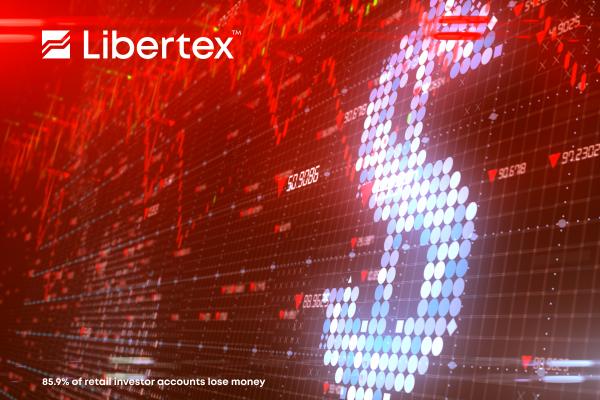Last year was a famously strong twelve months for the US dollar, with the greenback stampeding its way to the top of the majors’ table amid high inflation and aggressive monetary policy from the Fed. Between achieving historic parity with the euro, some of the highest government bond yields in recent memory, and record levels of demand from both institutions and private investors, 2022 was one of USD’s best years on record. But that all appears to have changed now.
The dollar has been sinking like a stone against the other majors, and, far from trading 1:1 with the euro, the fibre is now back at pre-pandemic levels of 0.91 at the time of writing (10/05/2023). So, what’s behind this sudden downturn? Employment figures are better than good, and Treasury note yields are still high. The reasons for the ongoing USD decline aren’t immediately clear. In this article, we’ll explore some of the key factors at play as we attempt to predict what the future might hold for the dollar.
All hawked out
The relationship between central bank policy and a given currency’s performance is well established, and the US dollar is no exception in this respect. The Federal Reserve has been aggressively tightening longer and harder than any of the other major regulators and has now been forced to bring its hiking cycle to a premature end following the failures of several major banks, including the high-profile collapses of Signature and SVB.
And while the Fed did raise its funds rate once again this week, it was only by 25 basis points, and, as is often the case, it wasn’t what the regulator said that moved the markets but rather what it chose to omit. The US regulator’s outlook was markedly more cautious than many of its peers’, and it opted to drop all guidance about future rate hikes entirely. The US Dollar Index closed 0.42% lower on the day of the decision (03/05) and has held on to those losses for the past week. Markets are clearly pricing in the now-clear scenario that the Fed will be forced to stop hiking at 5.25%, despite setting its target rate closer to 6% earlier in the cycle.
Risky business
Anybody with money invested in the markets will be well aware of how devastating 2022 was for risk assets. There was a mass flight from risk, and, unsurprisingly, most of the capital flowed (at least temporarily) into US dollars. Along with gold and the Swiss franc, the greenback is the go-to risk-off asset, and last year’s fear and anxiety surrounding rampant inflation and general uncertainty quite predictably translated to dollar strength.
The big story of 2023 so far is the resurgence of risky instruments like crypto and stocks, so it’s unsurprising that we should now be seeing the dollar correct back to more reasonable levels, historically speaking. Bitcoin is currently up almost 70% YTD, while the S&P 500 is up almost 10% over the same period. Even high beta fiat currencies like the Aussie dollar have recorded modest gains following the latest FOMC meeting. For most traders and investors, the tentative reversal of the protracted bear market is an overwhelming positive, even if it does mean a short-term decline in the US dollar. Provided that a major devaluation can be avoided, a reasonable correction from late 2022 levels would probably be best for both the dollar and the US economy.
Just try and stay positive
Given the wholesale doom and gloom being spread around of late, it’s important to note that the US economy is, in fact, looking extremely healthy right now. Unemployment is at a more than 50-year low of 3.4%, a level unseen since the Summer of Love in the late 1960s. Meanwhile, the latest non-farm payrolls indicated 253,000 new jobs were created in April. This absolutely obliterated all forecasts, the most optimistic of which hovered around just 165,000.
Looking at Treasury yields now, we are also seeing a very positive dynamic. The two-year government bond has risen back above 3.92% after visiting 3.56% last month, representing a strong sign of confidence in the US national currency. While both a strong labour market and high T-note yields are traditionally good for the dollar’s paper value, too, investors shouldn’t be perturbed by the USD’s failure to turn strong fundamentals into real-world gains. We would all do well to remember just how high the dollar rose in 2022 due to a combination of geopolitical uncertainty, hyperinflation and central bank policy divergence. A correction is not only perfectly understandable, it’s absolutely necessary to ensure the competitiveness of US exports and the stability of the monetary system at large.
Trade CFDs on currencies with Libertex
Whether you think that the US dollar will continue its downtrend or that the foundations have now been laid for stable growth, you’ll always be able to throw your hat in the ring with Libertex. Because we offer both long and short CFD positions on a range of key majors like EUR/USD, GBP/USD and JPY/USD, as well as more exotic pairs like CHF/USD and AUD/USD, you’re sure to find an underlying asset and direction to suit you. With ultra-low spreads from 0.2 pips and leveraged trading up to 30:1, Libertex offers some of the most competitive terms around. Beyond currency pairs, Libertex also offers CFD trading in the US Dollar Index, core stock indices, and more! To find out more about what Libertex can offer you or to create your very own trading account, visit www.libertex.com/signup
Risk Warning: CFDs are complex instruments and come with a high risk of losing money rapidly due to leverage. 85.9% of retail investor accounts lose money when trading CFDs with this provider. Tight spreads apply. Please check our spreads on the platform. You should consider whether you understand how CFDs work and whether you can afford to take the high risk of losing your money.


